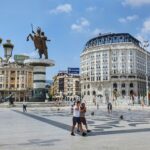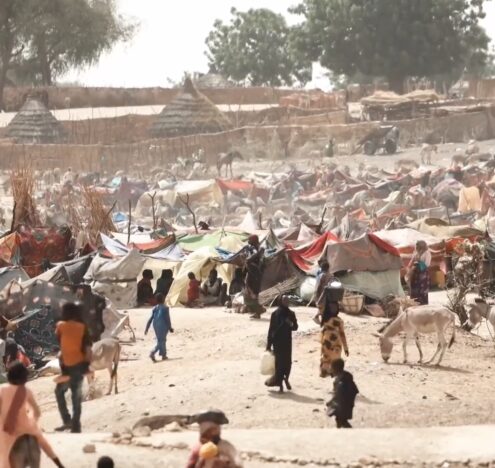With two nuclear power states, unsettled territorial disputes, ethnopolitical violence, terrorism and insurgencies, asymmetric warfare and international military interventions, South Asia remains one of the most militarized regions in the world. Since gaining independence, relations between South Asian states — that include Afghanistan, Bhutan, Bangladesh, India, Nepal, Pakistan, and Sri Lanka — have been strained by transnational terrorism, cross-border skirmishes, and intra-regional migration that has forced millions to live in indefinite periods of uncertainty and insecurity.
The internal stability of South Asian states has always been intimately connected to the conflicts occurring outside their national borders, which has militarized their foreign policies. This is evidenced, for example, through the armed involvement of regional actors in the conflicts in Afghanistan, the Kashmir Valley, and Sri Lanka, which have directly impacted the internal dynamics of these states — particularly India and Pakistan. To protect themselves from various external pressures, South Asian states have turned to militarized policing practices that are rooted in their colonial past.
A militarized foreign policy is intrinsically linked to militarized domestic policing. South Asia provides a good case study for understanding this link, and its impact on both domestic security and foreign relations. The key question, however, is: Does militarized policing make any of the states safer?
WHAT DRIVES SECURITY CONCERNS IN SOUTH ASIA
In South Asia, the framing of internal “security threats,” often as threats facilitated by neighboring states, directly correlates with the operations and practices of law enforcement agencies — both civilian policing organizations and paramilitary forces —and how host states invest in them.
The almost reflexive attribution of domestic “security issues” to the actions of external actors (i.e., rival states) directly impacts how host states frame their foreign policies and think about regional relations and alliances. Pakistan, for instance, has routinely sought to establish that domestic challenges — from separatist and militant groups to the more recent civilian dissent and political opposition — are sponsored by Indian security and intelligence agencies, as well as other states. This not only delegitimizes such movements but also enables the over-policing of dissent. In India, similar attempts have been made to discredit the recent farmer’s protests as being supported by Islamabad and Beijing.
While concerns about foreign involvement in domestic insurgencies are not new, their extension to voices critical of government policies is troubling. It has led to the repression and over surveillance of civilians by counterterrorism departments and paramilitary forces, whose mandates have expanded over the years to police and survey local residents for their alleged connection to other states in the region. Sri Lanka’s notorious Special Task Force, an elite paramilitary unit of the Sri Lankan police, is a good example, having been strengthened over the years to deal with “foreign terrorists.”
A militarized foreign policy is intrinsically linked to militarized domestic policing. South Asia provides a good case study for understanding this link, and its impact on both domestic security and foreign relations. The key question, however, is: Does militarized policing make any of the states safer?
Widening the mandates of counterterrorism departments and paramilitary forces also influences how these states shape their regional and international alliances. For instance, frequent collaborations between the United States and Pakistan, and between China and Pakistan, have taken place in the domain of counterterrorism. Last year, Chinese officials pledged greater “law enforcement cooperation” with Pakistan. As per reports, an important consensus on counterterrorism, capacity building, and of course security for the China Pakistan Economic Corridor (CPEC) was reached — specifically to “safeguard the common interests as well as security and stability of the two countries and continuously promote the China-Pakistan all-weather strategic cooperative partnership.”
For India, Pakistan’s patronage of anti-India militant groups in Kashmir (i.e, Lashkar e Taiba) and Afghanistan, along with the strategic targeting of Indian assets in these conflict zones has led to an expansion of its paramilitary forces domestically, such as the Central Reserve Police Force, which is responsible for the state’s internal security. After the 2008 Mumbai attacks, India has also reevaluated its relationship with allies and other states beyond South Asia, pursuing cooperation on counterterrorism and counterinsurgency strategies, which in turn has affected the development of India’s domestic law enforcement agencies.
India’s relationship with Israel is illuminating. Over the past few years, Israel’s police and security forces have been training Indian police officers in border management, internal security, intelligence, counterterrorism and other “best practices.” Last year, concerns were raised by activists that such an agreement between two militarized states would further the abuse meted out by Indian police officers, particularly in Indian-administered Kashmir. India, however, has been paying it forward by training Afghan police officers in counterterrorism and counternarcotics, as part of its ongoing efforts to strengthen the capacity of the Afghan army and policing organizations on a turf where its rivalry with Pakistan continues to play out.
These are just a few examples of how the narratives of counterterrorism color the way South Asian states invest in their domestic policing and law enforcement agencies. These trends also raise doubts about claims that the police in South Asia are incapable of reform. The police in the region are indeed reforming, by becoming more professional and working to increase their capacity. But the police in each state is also concerned about its power, and is reforming in ways that solidify their position as central to state security objectives. In other words, ongoing reforms and widening mandates have made a militarized police force inevitable.
THE PATTERNS
There are three policy-relevant patterns from this parallel militarization of foreign policy and domestic policing in South Asia that raises questions about the effectiveness of police militarization, and its compatibility with democratic processes.
First, the militarization of policing is directly connected to the nexus of security and development, and has led to the weaponization of critical infrastructure and development projects (such as CPEC) that is designed to protect foreign assets — which is necessary for strengthening alliances. Some of these projects involve transforming urban areas into “smart cities,” leading to foreign investments in CCTV infrastructure for greater surveillance, and technology that can be misused. In order to protect CPEC and ensure that it remains (somewhat) on schedule, the Pakistan government has overseen the deployment of military units into cities to protect critical infrastructure, especially Chinese assets in Karachi and Balochistan, which has also led to an overall expansion of Pakistan’s counterterrorism infrastructure.
In general, part of China’s economic expansion also comes with the provision of military arms and equipment, including counterinsurgency equipment for the police not just in Pakistan, but also Bangladesh, Myanmar, and Sri Lanka. While some of these developments may be for legitimate policing, to what extent they result in furthering authoritarian repression remains to be seen.
Second, the internal-external security nexus has also seen greater investment in paramilitary units, resulting in a continuing overlap of military and civilian policing functions and organizations. This can be seen in the cases of special paramilitary forces in Bangladesh (e.g., the Rapid Action Battalion) and Pakistan (e.g., the Pakistan Rangers), both of which have been playing a pivotal role not only in domestic counterinsurgency operations, but also in the suppression of political dissent. The use of CRPF in India to clamp down on Anti–Citizenship Amendment Act (CAA) protests and, more recently, the farmer’s protests, also shows how the ambit and reach of paramilitary police forces can move away from counterterrorism to countering dissent, another legacy of colonial rulers’ fears of the “suspect communities.”
Third, and connected to the idea of “suspect communities,” is the risk that continued investment in militarized policing poses for the most marginalized (and vulnerable) groups in South Asia. Aside from the suppression of dissent and the application of draconian sedition and antiterrorism laws on both sides of the India-Pakistan border, the status of migrants and refugees in South Asia, such as the Bengalis and Afghans in Pakistan, continues to remain precarious. Historically, these communities are criminalized, and viewed as threats to the nation, and thus dealt with through specialized policing units and cells created to survey and harass minority communities. This also simulates discrimination against minorities, particularly those seen as “foreigners,” such as Bengalis in Assam that are securitized and perceived as enemies by the police, who are either complicit in the violence against them or act as silent spectators.
JUST THE TIP OF THE ICEBERG
Such militarized suppression of migrants, minorities, and critical voices is coupled with legal and judicial harassment that collectively enables the pacification and dehumanization of those hit hardest by the conflicts and security issues that the region faces regularly.
Further research is needed on the intersection of a militarized foreign policy, insecure regional relationships, and the militarization of domestic policing in South Asia — and to determine if any of these practices actually make these states safer. One thing, however, is clear: Collectively, these dynamics directly and decidedly shape the everyday lives of those residing within and between these countries.
Zoha Waseem is a postdoctoral research fellow at University College London.





















